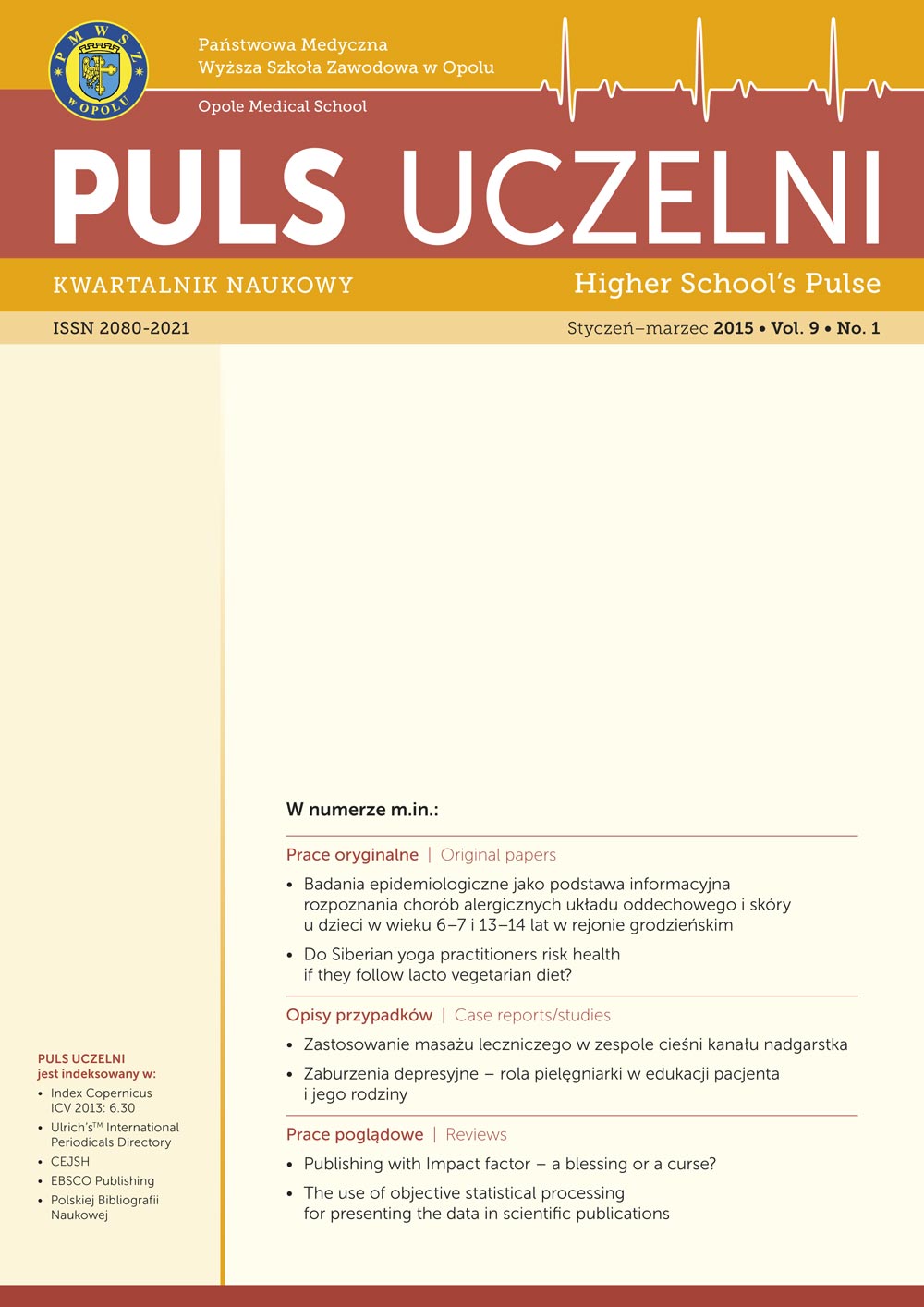DO SIBERIAN YOGA PRACTITIONERS RISK HEALTH IF THEY FOLLOW LACTO VEGETARIAN DIET?
DO SIBERIAN YOGA PRACTITIONERS RISK HEALTH IF THEY FOLLOW LACTO VEGETARIAN DIET?
Author(s): Liudmila G. Klimatckaia, Olga ZaitsevaSubject(s): Social Sciences, Sociology, Health and medicine and law
Published by: Państwowa Medyczna Wyższa Szkoła Zawodowa w Opolu
Keywords: education; sociology;health and medicine and law; human ecology
Summary/Abstract: Background: Practicing yoga has become widely popular in Siberia and vegetarian diet constitutes one of its most importantassumptions with a great impact on the human body.However, vegetarians are not the tradition in Siberia. Aim of the study: To evaluate the diet and assess whether Siberian yoga practitioners risk health reducing some nutrients’intake. Material and methods: 47 Siberian women practicing yoga(program “Art of Living”), aged 31.9±7.4 years and the residentsof Krasnoyarsk city were examined. Their height and weightwere recorded. Then, the values of height and weight wereused to calculate their BMI. After that, their current food consumptionwas assessed using a 24-hour nutritional recall. Therecall was the basis to assess the quantitative content, compositionand nutritional value of their average daily nutritionration. The mean energy values and the levels of basic foodcomponents were calculated with the use of the computerprogram. The studies were conducted in the winter-springperiod. Results: The data shows that, within the group of womenexamined in the study, over- or under-nutrition in accordanceto the classification of BMI 20.88±2.51 kg/m2 have notbeen found. Their daily diet includes milk and dairy products,grains, legumes, nuts, cereals, vegetables, fruit, driedfruit, berries, leafy greens, seeds and herbs. Lacto vegetariansportswomen have 4–5 meals a day with the use of up to 2 litersof water. The diet contains a variety of products and takesenergy from carbohydrates, proteins and fats. The diet providesquantitative protein content, but it should be designedto avoid the use of proteins as the energy source. The ratio ofproteins vs. fats vs. carbohydrates was 1 : 1 : 3.96, which canbe considered as the norm for proteins and fats, but not forcarbohydrates (recommendations for sportsmen 1 : 1 : 5). Inour opinion, the energy goals were not met due to low intakeof carbohydrates in women group practicing yoga in Siberia.The daily average consumption of vitamins in the group correspondsto the consumption of vitamins in the whole Russianpopulation. Unfortunately, there is the imbalance betweencalcium (Ca), phosphorus (P) and magnesium (Mg) in the dietaryhabits which is not positive for the musculoskeletal system.We have also identified a high consumption of sodium(Na) and low of potassium (K), which can lead to some kidneyand heart disorders. Conclusions: The research has helped us to answer the questionwhether Siberian yoga practitioners risk health if they arelacto vegetarians. Here are the findings:1. Among lacto vegetarian yoga practitioners from Siberiaover- or under-nutrition in accordance to the classificationof BMI have not been found.2. Lacto vegetarian yoga practitioners have appropriate nutritionalhabits: 4–5 meals a day with the use of up to 2 litresof water.3. Food set has plastic, energy and biologically stimulatingregulatory value.4. Siberian female yoga practitioners have low (2%) probablerisk of osteoporosis caused by inadequate intake of Ca intheir daily diet and medium-risk (16%) of anemia caused byiron (Fe) deficiency and, therefore, they should supplementtheir diet using mineral supplements from the pharmacy.Certainly, vegetarians are not the tradition from the pointof view of Siberia where it is difficult to find fresh vegetables,but lacto vegetarian diet can be successfully used.
Journal: Medical Science Pulse
- Issue Year: 9/2015
- Issue No: 1
- Page Range: 8-12
- Page Count: 5
- Language: English

